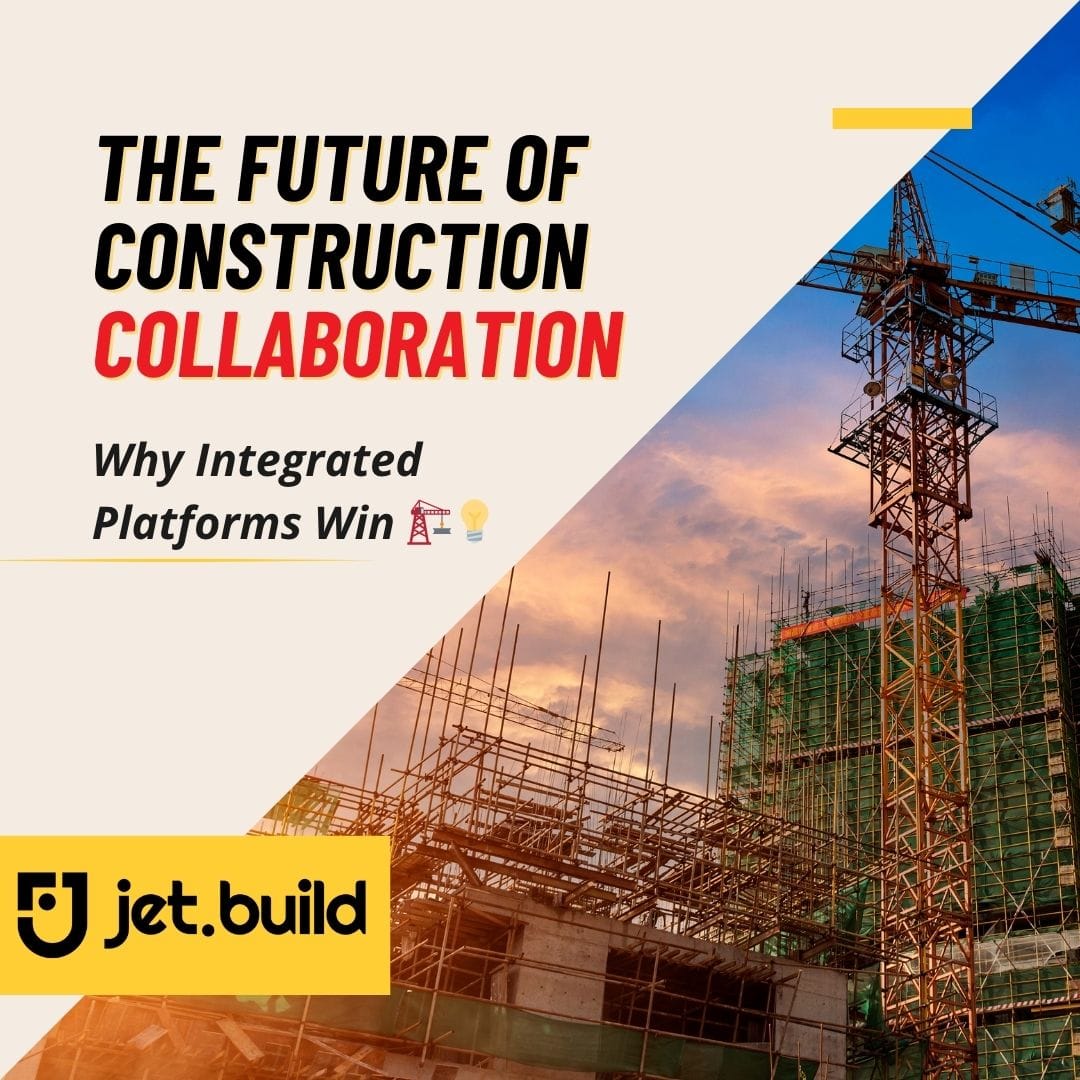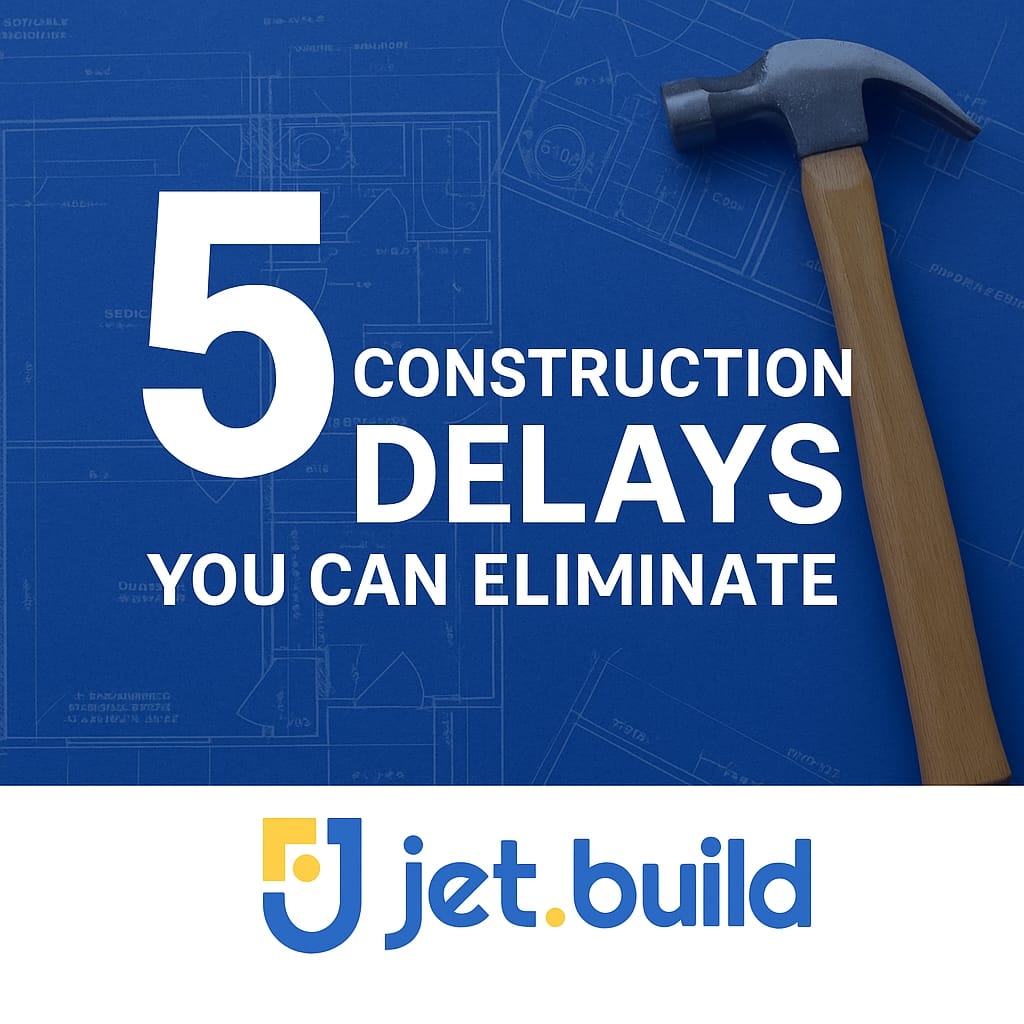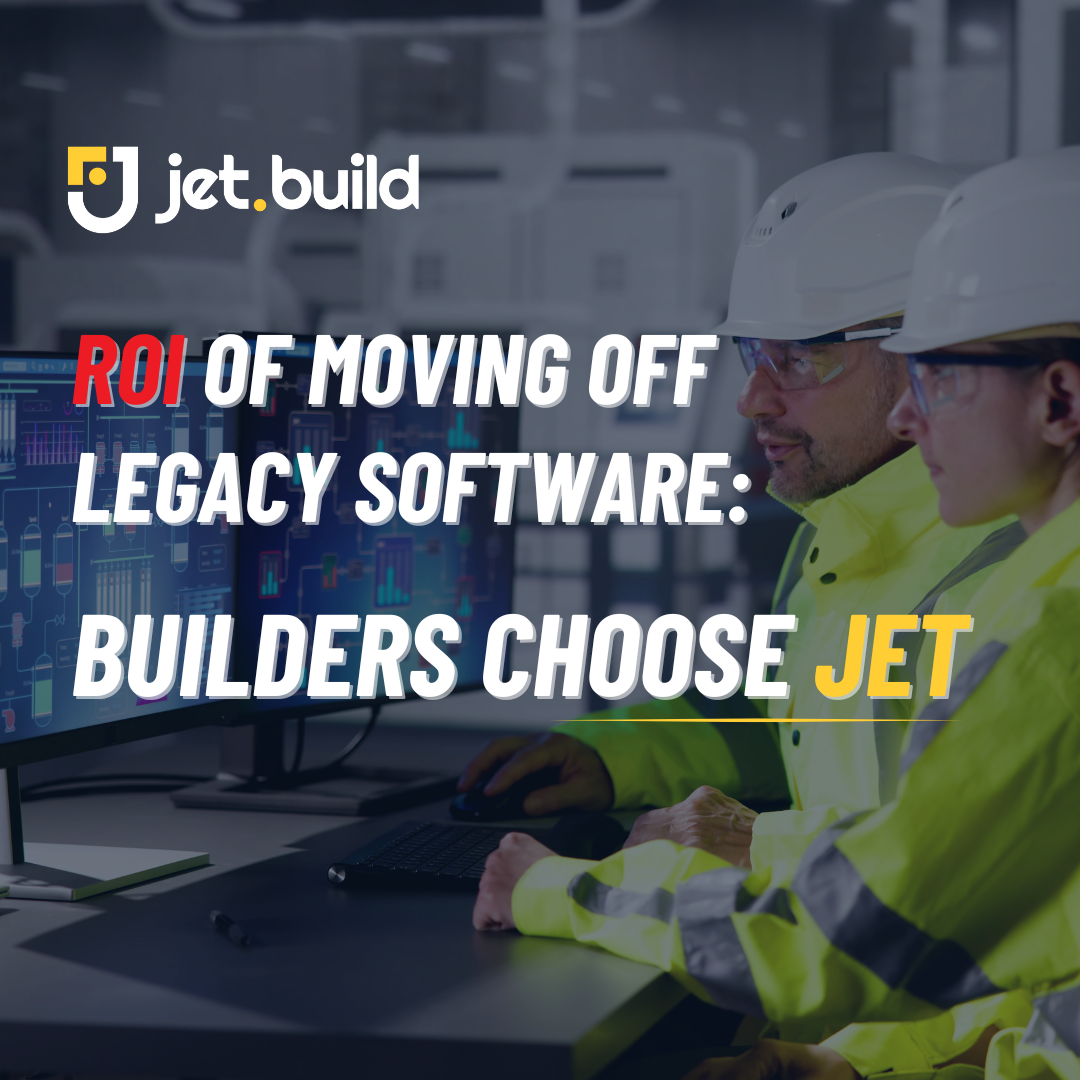Introduction
How we live, work, and play is evolving in today's fast-paced world. The traditional boundaries between these aspects of life are becoming increasingly blurred, giving rise to a new trend in urban development: work, play, live (WPL) real estate developments. These integrated communities combine residential, commercial, and recreational spaces, offering a holistic approach to modern living. The appeal of WPL developments lies in their ability to provide convenience, enhance lifestyle quality, and foster a sense of community. As this trend gains momentum, construction management technology like Jet.Build plays a crucial role in bringing these complex projects to life efficiently and effectively.
The Appeal of Work, Play, Live Developments
Convenience and Connectivity
One of the primary drivers of the demand for WPL developments is convenience. Residents can live, work, and enjoy leisure activities in these integrated communities without requiring long commutes. This proximity reduces travel time and costs, allowing for a more balanced and fulfilling lifestyle. For instance, a resident can walk from their apartment to their office, grab lunch at a nearby café, and attend a yoga class in the evening, all within the same development.
The concept of convenience extends beyond just physical proximity. WPL developments often feature integrated transportation solutions, such as bike-sharing programs, electric vehicle charging stations, and access to public transit. These amenities make it easier for residents to navigate the urban environment efficiently, further enhancing the appeal of these communities.
Enhanced Lifestyle Quality
WPL developments often feature state-of-the-art amenities and green spaces, promoting a higher quality of life. These communities are designed with the needs of modern residents in mind, offering everything from fitness centers and parks to coworking spaces and entertainment venues. Integrating various functions within a single development encourages a healthy, active lifestyle and fosters social interaction among residents.
Moreover, these developments often prioritize sustainable design and construction practices. Incorporating green building materials, energy-efficient systems, and renewable energy sources, WPL developments reduce environmental impact and create healthier living environments. This focus on sustainability resonates with the growing number of eco-conscious consumers who seek to minimize their carbon footprint.
Fostering Community
The design of WPL developments emphasizes communal spaces and activities that bring people together. This focus on community building helps combat the isolation often experienced in traditional urban living. Shared spaces like communal parks, event halls, and recreational areas encourage residents to connect, collaborate, and build lasting relationships.
Community-oriented programming, such as farmers' markets, cultural festivals, and fitness classes, further enhances the sense of belonging among residents. These events provide opportunities for social interaction and community engagement, fostering a supportive and vibrant neighborhood culture.
Top Cities Embracing Work, Play, Live Developments
As the popularity of WPL developments grows, certain cities are emerging as hotspots for these innovative communities. These cities are characterized by their forward-thinking urban planning, strong economic growth, and commitment to sustainability.
Austin, Texas
Austin has long been known for its vibrant culture and tech-driven economy, making it an ideal location for WPL developments. The city's thriving tech sector attracts young professionals seeking a dynamic, urban lifestyle. Developments like The Domain offer a mix of residential, office, and retail spaces, creating a self-sustained community where residents can live, work, and play.
The city's reputation as a hub for innovation and creativity also contributes to the success of WPL developments. Austin's strong sense of community, diverse cultural offerings, and outdoor recreational opportunities make it a desirable location for integrated living environments.
Seattle, Washington
Seattle's booming tech industry, led by giants like Amazon and Microsoft, has spurred demand for WPL developments. The city's commitment to sustainability and green building practices makes it a prime candidate for integrated communities. Projects like South Lake Union and The Spring District exemplify Seattle's approach to combining residential, commercial, and recreational spaces in a cohesive urban environment.
Seattle's emphasis on environmental sustainability is evident in its WPL developments, which often incorporate green roofs, rainwater harvesting systems, and energy-efficient building designs. These features reduce the environmental impact and enhance the quality of life for residents by providing healthier, more sustainable living spaces.
Denver, Colorado
Denver's strong economy, outdoor lifestyle, and commitment to sustainability make it a magnet for WPL developments. The city's focus on creating walkable, mixed-use neighborhoods is evident in projects like Union Station and River North (RiNo). These developments integrate residential, office, and leisure spaces, offering residents a balanced and fulfilling lifestyle.
Denver's emphasis on transit-oriented development further enhances the appeal of WPL communities. By prioritizing access to public transportation and pedestrian-friendly infrastructure, the city encourages residents to adopt sustainable modes of travel, reducing traffic congestion and environmental impact.
Miami, Florida
Miami's unique blend of cultural diversity, economic growth, and year-round sunshine makes it an attractive location for WPL developments. The city's emphasis on waterfront living and vibrant nightlife is reflected in projects like Miami Worldcenter and Brickell City Centre. These developments offer a seamless blend of living, working, and entertainment spaces, catering to Miami's dynamic population.
Miami's strategic location as a gateway to Latin America and its thriving tourism industry further contribute to the success of WPL developments. The city's diverse cultural landscape and emphasis on luxury living attract residents and investors seeking a cosmopolitan lifestyle.
Nashville, Tennessee
Nashville's burgeoning music scene and robust job market have fueled demand for WPL developments. The city's emphasis on preserving its cultural heritage while promoting modern urban living is evident in projects like Fifth + Broadway and Capitol View. These developments combine residential, office, and entertainment spaces, creating vibrant communities that reflect Nashville's unique character.
Nashville's focus on cultural preservation and innovation makes it an ideal location for WPL developments. The city's commitment to maintaining its historic charm while embracing modern urban living creates a unique and appealing environment for residents and businesses.
The Role of Construction Management Technology
Creating these multifaceted developments requires advanced construction management solutions to handle the complexities. Technologies like Jet.Build are revolutionizing the construction industry by streamlining processes, enhancing collaboration, and improving Efficiency.
Streamlining Processes
Jet.Build offers comprehensive project management tools that streamline various construction processes. From planning and design to execution and monitoring, the platform integrates all aspects of a construction project into a single, cohesive system. This integration reduces the likelihood of errors, delays, and cost overruns, ensuring that projects are completed on time and within budget.
The platform's intuitive interface allows project managers to track progress, manage resources, and coordinate tasks easily. Automated scheduling, task management, RFIs, and Submittals features ensure that all team members know their responsibilities and deadlines, minimizing the risk of miscommunication and project delays.
Enhancing collaboration
Effective collaboration is crucial in constructing WPL developments, given the diverse stakeholders involved, including architects, engineers, contractors, developers, and lenders. Jet.Build facilitates seamless communication and collaboration among these stakeholders through its cloud-based platform. Real-time updates, document sharing, and centralized communication channels ensure everyone is on the same page, leading to more efficient decision-making and problem-solving.
The platform's collaboration tools enable stakeholders to instantly share project updates, documents, and reports. This real-time communication reduces the need for lengthy meetings and email exchanges, allowing teams to focus on executing the project efficiently. Furthermore, accessing project information from any location enhances flexibility and responsiveness, which is crucial for managing complex developments.
Improving Efficiency
Jet.Build leverages advanced technologies such as Gantt-Chart Scheduling, Drawing Overlays, and artificial intelligence (AI) reporting to enhance construction efficiency. The consolidated platform allows for precise project planning and visualization, minimizing operation clashes and optimizing resource allocation. AI-powered analytics provide insights into project performance, helping managers identify and proactively address potential issues.
These technologies also enable predictive maintenance and resource management, ensuring equipment and materials are used efficiently by minimizing waste and optimizing resource utilization, Jet.Build contributes to more sustainable construction practices, aligning with the eco-friendly principles often emphasized in WPL developments.
Case Studies of Successful Work, Play, Live Developments
The Domain, Austin, Texas
The Domain in Austin is a prime example of a successful WPL development. Spanning over 300 acres, The Domain offers a mix of luxury apartments, office spaces, retail shops, and entertainment venues. Residents enjoy a walkable environment with access to green spaces, dining options, and fitness centers. The development has attracted significant tech companies, creating a hub for innovation and economic growth.
The Domain's design emphasizes connectivity and convenience, with pedestrian-friendly pathways, integrated transportation solutions, and diverse amenities. The development's vibrant community culture, supported by regular events and activities, further enhances its appeal to residents and businesses.
South Lake Union, Seattle, Washington
South Lake Union is a transformative WPL development that has reshaped Seattle's urban landscape. Once an industrial area, it is a vibrant neighborhood with residential units, office buildings, and recreational facilities. Home to Amazon's headquarters, South Lake Union has become a center for tech innovation. The development features sustainable design elements, including green roofs and energy-efficient buildings, reflecting Seattle's commitment to environmental stewardship.
South Lake Union's emphasis on sustainability extends to its transportation infrastructure, with extensive bike lanes, electric vehicle charging stations, and easy access to public transit. These features reduce the environmental impact and enhance residents' quality of life by promoting active, healthy lifestyles.
Union Station, Denver, Colorado
Union Station in Denver is a historic transportation hub revitalized into a thriving WPL development. The project includes residential units, office spaces, restaurants, and retail shops centered around the iconic train station. Union Station's strategic location and integration of diverse functions have made it a model for transit-oriented development, promoting walkability and reducing reliance on cars.
The revitalization of Union Station has created a vibrant, mixed-use community that combines historic charm with modern amenities. The development's emphasis on public transportation and pedestrian-friendly design encourages sustainable living and enhances residents' and visitors' overall quality of life.
Miami Worldcenter, Miami, Florida
Miami Worldcenter is one of the most significant WPL developments in the United States, encompassing 27 acres in downtown Miami. The development features luxury residences, hotels, office spaces, and a vibrant retail and entertainment district. Its strategic location near major transportation hubs and cultural landmarks makes it a focal point for urban living in Miami. Miami Worldcenter's emphasis on pedestrian-friendly design and green spaces enhances its residents' overall quality of life.
The development's diverse range of amenities, from high-end shopping and dining to cultural and recreational facilities, creates a dynamic and engaging environment for residents and visitors. Miami Worldcenter's emphasis on luxury and convenience attracts a diverse, cosmopolitan population seeking a vibrant urban lifestyle.
Capitol View, Nashville, Tennessee
Capitol View is a mixed-use development in the heart of Nashville that combines residential, office, and retail spaces with public parks and recreational facilities. The development's design promotes walkability and connectivity, making it easy for residents to access amenities and engage with the community. Capitol View's integration of modern architecture with Nashville's historic charm has made it a sought-after destination for residents and businesses.
The development's emphasis on community engagement and cultural preservation creates a unique and appealing environment for residents and visitors. Capitol View's diverse amenities and vibrant community culture make it a model for successful WPL developments.
The Future of Work, Play, Live Developments
As the demand for WPL developments continues to grow, the future of urban living looks increasingly integrated and sustainable. Several trends are shaping the future of these developments:
Sustainable Design
Sustainability is at the forefront of WPL development trends. Developers increasingly incorporate green building practices, renewable energy sources, and sustainable materials into their projects. This focus on sustainability reduces the environmental impact and enhances residents' quality of life by providing healthier living environments.
Future WPL developments will likely incorporate advanced sustainable technologies, such as solar power, geothermal heating and cooling systems, and green roofs. These features reduce the environmental impact and create more resilient and self-sufficient communities.
Smart Technology
The integration of innovative technology is transforming WPL developments into connected communities. Smart home systems, energy-efficient appliances, and advanced security features enhance the convenience and safety of residents. Additionally, smart city infrastructure, such as intelligent transportation systems and data-driven urban planning, supports the efficient functioning of these developments.
Using Internet of Things (IoT) devices and data analytics allows for more efficient resource management and enhanced quality of life. Innovative technology can optimize energy use, monitor air quality, and provide real-time information on transportation options, contributing to a more sustainable and connected urban environment.
Flexibility and Adaptability
2022 has highlighted the need for flexibility and adaptability in urban design. WPL developments are increasingly incorporating flexible spaces that can be adapted for various uses, such as remote work, social distancing, and community events. This adaptability ensures that these communities can respond to changing needs and preferences over time.
Future developments may include modular buildings and adaptable spaces that can be easily reconfigured to accommodate different functions. This flexibility allows for greater resilience and responsiveness to changing circumstances, ensuring that WPL communities remain vibrant and relevant.
Health and Wellness
The focus on health and wellness is essential to WPL developments. Developers are incorporating outdoor fitness areas, wellness centers, and green spaces to promote physical and mental well-being. The integration of biophilic design elements, such as natural light and indoor plants, further enhances residents' overall health.
Future developments may include wellness-oriented amenities like meditation gardens, therapeutic spa facilities, and health-focused culinary offerings. These features cater to the growing demand for holistic wellness and create environments that support the overall well-being of residents.
The Role of Jet.Build in Supporting the Future of WPL Developments
As WPL developments become more complex and sophisticated, the role of construction management technology like Jet.Build becomes even more critical. Here are some ways Jet.Build supports the future of WPL developments:
Advanced Planning and Design
Jet.Build advanced planning and design tools enable developers build a detailed, accurate plan for WPL developments. The platform's modern development and construction management capabilities allow for precise visualization and process simulation of the project, helping to identify potential design clashes and optimize resource allocation. This advanced planning ensures that projects are built efficiently and sustainably.
Jet.Build also facilitates effective coordination among stakeholders, reducing the likelihood of errors and delays. By providing a comprehensive and detailed process and operations model of the project, Jet.Build helps ensure that all aspects of the development are aligned and integrated seamlessly.
Real-Time Collaboration
Jet.Build's cloud-based platform facilitates real-time collaboration among stakeholders, ensuring everyone involved in the project is aligned and informed. This real-time collaboration is crucial for managing the complexities of WPL developments, where multiple functions and spaces must be integrated seamlessly to enable effective communication and coordination, Jet.Build helps to streamline decision-making and reduce delays.
The platform's collaboration tools also enhance transparency and accountability, ensuring that all stakeholders can access up-to-date information and contribute to the project's success. This collaborative approach fosters a sense of shared responsibility and commitment to achieving the project's goals.
Data-Driven Insights
Jet.Build leverages AI-powered analytics to provide data-driven insights into project performance. These insights help construction managers identify and proactively address potential issues, ensuring that projects stay on track and within budget. The platform's ability to analyze large amounts of data supports continuous improvement, enabling developers to refine their processes and deliver higher-quality projects.
Data analytics enhances decision-making by providing actionable insights into project performance, resource utilization, and potential risks. This data-driven approach allows for more informed and strategic decision-making, contributing to the overall success of the development.
Sustainable Construction Practices
Jet.Build supports sustainable construction practices by providing tools for resource management, waste reduction, and energy efficiency. The platform's real-time monitoring capabilities allow developers to track resource usage and minimize waste, reducing the environmental impact of construction activities. Additionally, Jet.Build's support for green building certifications, such as LEED, helps developers achieve their sustainability goals.
By promoting sustainable construction practices, Jet.Build contributes to the creation of more environmentally friendly and resilient communities. The platform's emphasis on sustainability aligns with the broader goals of WPL developments, ensuring that these communities are built to last and minimize their environmental impact.
Conclusion
The growing demand for work, play, and live real estate developments reflects a fundamental shift in how we approach urban living. These integrated communities offer the convenience, connectivity, and quality of life that modern residents seek. As cities around the world embrace this trend, the role of construction management technology like Jet.Build becomes increasingly essential by streamlining processes, enhancing collaboration, and improving efficiency, Jet.Build supports the successful development of these complex projects. As we look to the future, the continued evolution of WPL developments promises to create more sustainable, connected, and vibrant urban environments for generations to come.
The synergy between advanced construction management technology and innovative urban planning transforms the urban living landscape. By leveraging the power of technology, developers can create functional, efficient, vibrant, and sustainable communities. The future of work, play, and live developments is bright, and with the support of platforms like Jet.Build, we can look forward to a new era of urban living that prioritizes convenience, sustainability, and community well-being.
Check out The Veterans Who Build Show, sponsored by Jet.Build!









